What are common nose concerns?
A brief list of common nose concerns patients often dislike about their nose include the following:
- Nasal bridge bumps
- Irregular or rounded nasal tip
- Out of proportion nose
- Crooked nose
- Pointed nose
- Nose that droops
- Asymmetrical nostrils
What is rhinoplasty for nose concerns?
Rhinoplasty, commonly known as a nose job, is a surgical procedure aimed at altering the shape, size, or structure of the nose. Patients often seek rhinoplasty to correct cosmetic concerns and in some cases improve nasal function. Each rhinoplasty is unique, tailored to the individual’s specific nasal anatomy and desired outcomes. At Me Clinic, we understand that no two noses are alike, and thus, no two rhinoplasty procedures are the same.
Areas of the nose targeted by Rhinoplasty
Rhinoplasty primarily targets concerns on the tip of the nose, bridge and nostrils. However nose surgery also involves changes to the root of a nose, nose valves, and parts of the nostrils referred to as columella and alar.
- The nasal tip is the lower third of the nose and includes the cartilage that shapes the tip.
- The nasal bridge is the bony and cartilaginous structure that runs from the top of the nose between the eyes down to the nasal tip.
- The nostrils, or nares, are the external openings of the nose.
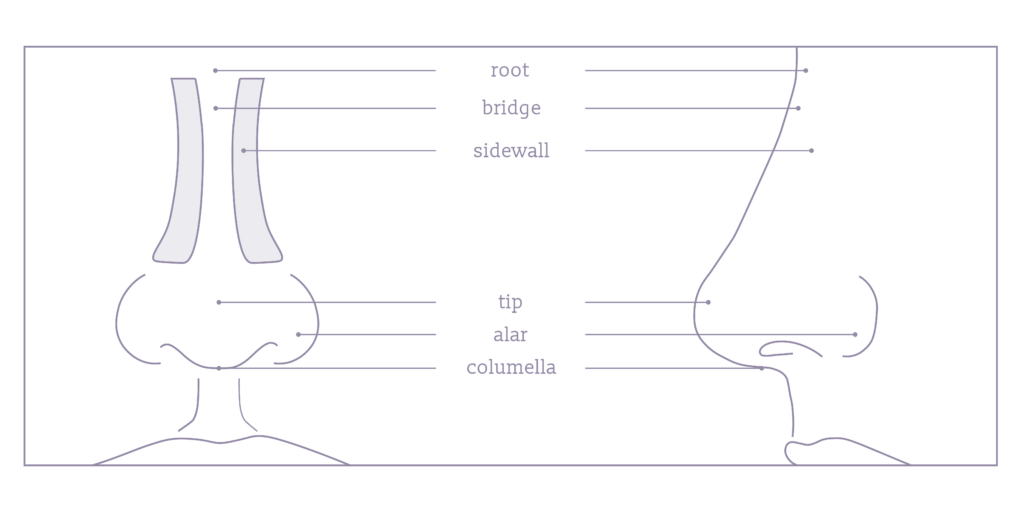
- The columella is the strip of tissue separating the nostrils, visible on the underside of the nose.
- The alar (alas) refers to the sides of the nostrils, which form the external lateral walls.
- The nasal root is the upper part of the nose, near the eyes, where the nose begins.
- The nasal valves are the internal structures that regulate airflow through the nose.
Common nose concerns addressed by rhinoplasty
Rhinoplasty targets problematic features of the nasal bridge, nasal tip and nostrils. Some very common problems patients seek resolving via a Rhinoplasty include the following:
1) Nose bumps (dorsal hump)
A dorsal hump, often described as a nasal bridge bump, is one of the most common and problematic reasons for seeking rhinoplasty.
A bumped nose is typically visible from the side profile and can be caused by excess bone or cartilage where the nasal bones meet the upper lateral cartilage.
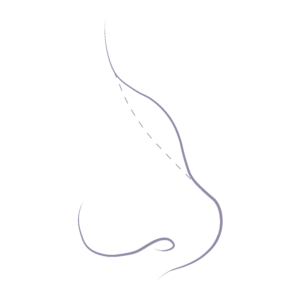
- A nose bump can be removed surgically using a combination of osteotomies, rasps, and scalpels.
- Once the bumped nose is resolved, the sides of the nose are brought together to restore a smooth, triangular shape to the nasal bridge.
- Our Plastic Surgeons will cater for patient preferences, who can choose to eliminate humps altogether for a straighter nose, or rather retain some nasal bridge fullness to maintain individual features.
The nose emphasis placed by a nasal bump is known to detract from your eyes, whereby removing bridge protrusion can create drastic aesthetic improvements.
2) Rounded nose (bulbous nasal tip)
A bulbous nasal tip, often described by patients as a “round ball at the end of the nose”, or simply a “fat tip” is another common nose concern. A rounded nose tip can be caused by thick nasal skin or robust nasal tip cartilages.

- Surgical techniques to address a bulbous tip include trimming excess cartilage, repositioning the lateral crura, and adding cartilage grafts to support and refine the nasal tip’s shape.
- For patients with thick nasal skin, additional techniques such as defatting and steroid injections may be employed to achieve the desired definition.
Addressing the problematic bulbous nasal tip can add more tip definition and sharpness for a more aesthetic nose.
3) Big Nose or Long Nose (Out of Proportion Nose)
Patients often seek rhinoplasty to reduce the overall size or length of their nose, which they feel draws undue attention and disrupts from other facial features.
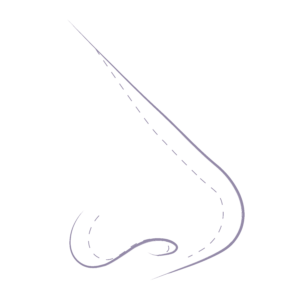
- Reduction rhinoplasty techniques involve reshaping the nasal tip and bridge to create a smaller, more proportionate nose.
- This complex rhinoplasty involves advanced nose reshaping techniques to resolve nose imbalance.
Reducing the size or length of a nose with rhinoplasty can significantly improve the balance between the nose and other facial features for promoting facial harmony.
4) Crooked Nose
Crooked noses, also known as off-centred or asymmetrical noses, can be caused by congenital factors, trauma, or previous surgery.
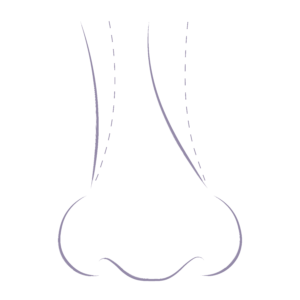
- Correction requires precise surgical techniques to straighten the nasal bones and septum.
- Osteotomies are used to realign the bones, while septoplasty addresses any deviation of the nasal septum.
- Cartilage grafts may be placed asymmetrically to ensure a straight and natural-looking nose.
A rhinoplasty can also correct nostril asymmetry, providing a more balanced appearance.
5) Pointy Nose
A pointy nasal tip, often due to excess cartilage, can make the nose appear overly sharp or prominent.
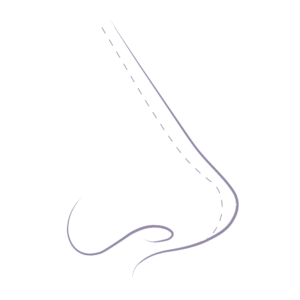
- Surgical techniques to address a pointed nose involve reshaping or removing excess cartilage at the nasal tip.
This reduction can create a more rounded and visually appealing nasal tip, enhancing the overall facial balance.
6) Droopy Nose
A droopy nasal tip, or ptotic tip, is characterised by a nasal tip that points downward, especially when smiling. A drooping tip is typically due to inadequate support of the lower lateral cartilages and can be synonymous with a collapsed tip.
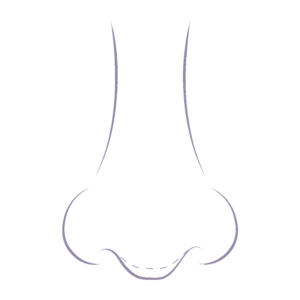
- Correction involves rotating and deprojecting the nasal tip to achieve a more balanced and aesthetically pleasing nasolabial angle.
- Techniques such as lateral crural overlay and cartilage grafting are used to provide additional support and maintain the new tip position.
A drooping nose can detract from your facial harmony, thereby removing this nose concern can make a nose more proportionate to your face.
7) Wide Nose
A wide nasal bridge, which may include a flat nasal bridge and flared nostrils, can make the nose appear disproportionately broad. This nose feature is common among those of Asian, African and Hispanic ethnicities
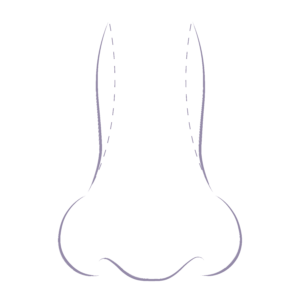
A wide nose can be addressed through various surgical techniques:
- Wide nasal bridge: a rhinoplasty for a wide nasal bridge involves narrowing the bridge using osteotomies to create a more refined contour.
- Flat nose: an augmentation rhinoplasty for a flat nasal bridge uses cartilage grafts to build up the flat nasal bridge.
- Flared nostrils: an Alar base reduction is suitable as it removes excess tissue at the base of the nostrils to reduce flare.
Incisions are hidden in natural creases to ensure minimal visible scarring. Narrowing and restoring the nasal bridge to a more proportionate size can help define your face and other features.
8) Breathing Concerns
While a rhinoplasty primarily addresses cosmetic nose concerns, it can also rectify certain breathing problems. These include:

- Nasal valve collapse: reinforcing nasal valves to improve appearance and airflow
- Narrow nasal passages: structural adjustments during rhinoplasty can widen nasal passages to improve breathing.
- Pinched nostrils: rhinoplasty can reshape and widen pinches nostrils, enhancing both aesthetics and function.
It is important to have your nasal concerns examined by a specialist plastic surgeon to identify the cause of your breathing concerns. In scenarios where you have a deviated septum and/or enlarged turbinates, a septoplasty and turbinoplasty are more suitable for medical concerns.
However, it is possible to combine a rhinoplasty with the breathing related procedures for optimal nose cosmetic benefit and medical relief.
What happens if I have multiple nose concerns?
Many patients have a combination of cosmetic nose concerns that may want to be resolved with rhinoplasty. There can be a range of cosmetic concerns where a nose can be long and have a bump, or the tip can droop alongside asymmetrical nostrils. Rhinoplasties are very complex because there can be a range of techniques and requirements for surgery. This complexity is why having a Specialist Plastic Surgeon with extensive training, experience, and rhinoplasty expertise is optimal. They can tailor the surgical approach to address all your concerns effectively, ensuring the best possible outcome for both aesthetics and function.
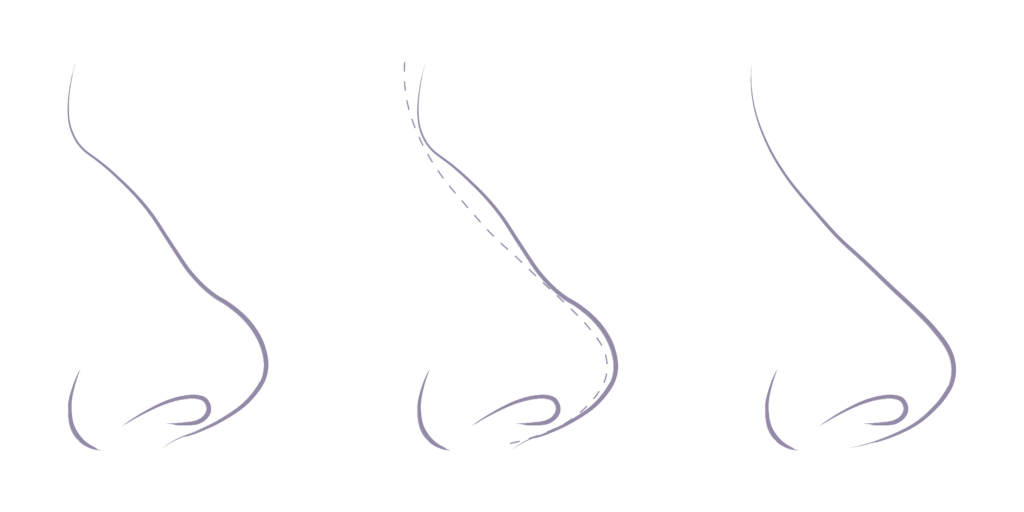
The above illustration demonstrates there can be multiple nose concerns in a single nose. This image shows a nose that has a nasal bump (dorsal hump) in combination with a rounded tip (bulbous tip) which is corrected by rhinoplasty to smoothen the nasal bridge and refine the nasal tip.
FAQs for common nose concerns rhinoplasty can correct
1. Can rhinoplasty fix a crooked nose?
Rhinoplasty can straighten a crooked nose, improving both its look and function.
2. What can be done about a rounded tip on my nose (bulbous nose tip)?
Rhinoplasty can refine a rounded tip known as a bulbous nose tip, reshaping nose concerns to be more proportionate with the rest of your face.
3. Is it possible to reduce the size of my nostrils with surgery?
Yes, nostril reduction is a common part of rhinoplasty that can balance your nose concerns with your facial features.
4. How can rhinoplasty address a bump on the nose?
Rhinoplasty can smooth out a nose bumps known as a dorsal hump, creating a more even profile and enhancing your facial symmetry.
5. Can rhinoplasty help if my nose is too long or too large?
Yes, rhinoplasty can adjust the length and overall size of your nose, making it more harmonious with your face.
6. Can rhinoplasty improve the asymmetry of my nose?
Yes, rhinoplasty can effectively correct nose concerns for asymmetrical features, enhancing overall facial balance.
7. What can be done for a nose that’s been injured or broken?
Rhinoplasty can repair and reshape a nose that has been distorted by injury, restoring its original appearance or improving it. For detailed insights, read Broken Nose Surgery: What You Need to Know and Do.
8. Can surgery make my nasal tip less pointy?
Yes, rhinoplasty can modify the shape of a pointy nasal tip, making it softer and more rounded to fit your facial aesthetics.
9. What solutions does rhinoplasty offer for a flat nose?
Rhinoplasty can add structure and definition to a flat nose, enhancing its profile and overall facial depth.
10. What makes a nose beautiful?
A beautiful nose is one that complements the individual’s facial features, maintaining balance and symmetry. Typically, it has a straight bridge and a tip that aligns well with the upper lip, contributing to overall facial harmony.
Set goals and realistic expectations for your consultation
The consultation process is a crucial step in your rhinoplasty journey. During this initial meeting, the surgeon will thoroughly analyse your nasal anatomy and condition to create a tailored surgical plan. It’s important for you to come in with clear expectations and to voice your specific concerns and desires. This open communication ensures that the surgeon understands exactly what you want to achieve and allows yo
Our experienced Specialist Plastic Surgeons are skilled in catering to a wide range of requests and can address multiple concerns simultaneously. They will provide you with detailed information about the procedure, the techniques that will be used, and the expected outcomes. You will leave the consultation well-informed and confident in the personalised approach that will be taken to enhance your nasal aesthetics and function.

